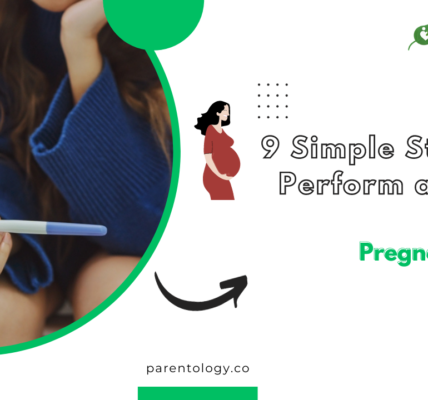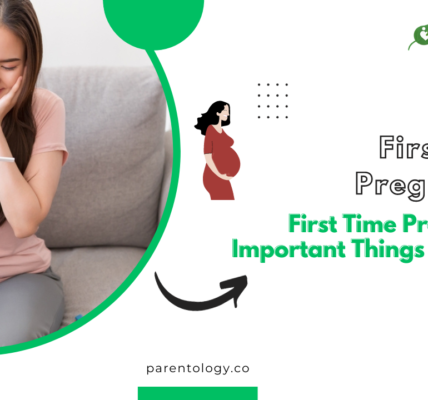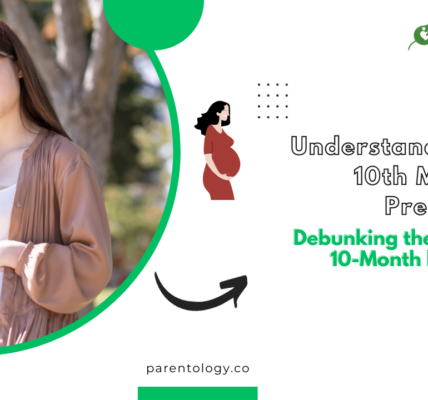When Do You Start Showing with Second Pregnancy: Symptoms, Differences & Coping Strategies
Bearing a second child is a remarkable journey that often differs from the first pregnancy. Many expectant mothers wonder when they’ll start showing during their second pregnancy and how symptoms may vary. Exploring these aspects along with effective coping mechanisms becomes crucial for a smoother experience. And understand when do you start showing with second pregnancy.
Understanding Second Pregnancy Symptoms
When Do You Start Showing with Second Pregnancy?
The noticeable baby bump with a second pregnancy might appear earlier than the first. Factors like muscle memory and a uterus that has already stretched contribute to this phenomenon. Typically, women start showing between 12-16 weeks during the second pregnancy.
Differences in Second Pregnancy Symptoms
Physical Changes:
- Early Appearance of Bump: Due to stretched abdominal muscles.
- Increased Fatigue: Juggling responsibilities can heighten exhaustion.
- More Intense Movements: Fetal activity might be more pronounced.
- Stronger Braxton Hicks Contractions: Experienced earlier due to muscle memory.
Emotional Variations:
- Mixed Emotions: Balancing care for the first child with personal needs.
- Anxiety & Excitement: Anticipating childbirth while handling daily tasks.
Coping Strategies for Second Pregnancy
Self-Care Techniques
Ensuring self-care during a second pregnancy is pivotal for both physical and emotional well-being.
- Prioritize Rest: Establishing a sleep routine aids in combating fatigue and supports energy levels necessary for managing multiple responsibilities.
- Delegate Responsibilities: Enlisting support from your partner, family, or friends eases the burden, allowing adequate time for self-care and nurturing.
- Embrace Nourishing Meals: Opt for balanced diets rich in nutrients and stay adequately hydrated throughout the day. Consulting a nutritionist or healthcare provider can provide tailored guidance.
- Mindful Exercise: Engaging in gentle exercises like prenatal yoga or swimming, recommended by your healthcare provider, promotes physical wellness and mental relaxation.
Emotional Well-being
Coping emotionally during a second pregnancy involves managing various aspects to maintain a healthy mindset.
- Seek Emotional Support: Joining online forums, parenting communities, or seeking counseling offers invaluable emotional support. Discussing concerns with others undergoing similar experiences can be comforting.
- Bonding Time: Carving out moments for quality time with your first child amidst preparations for the new arrival fosters a sense of togetherness and eases the transition for everyone.
Physical and Emotional Wellness
Nurturing your body and mind during this time is essential.
- Restorative Sleep: Prioritize quality sleep to replenish energy levels and support overall health. Utilize relaxation techniques like meditation or soothing music before bedtime.
- Nutrition and Hydration: Ensuring a well-balanced diet rich in essential nutrients helps sustain your energy. Staying hydrated aids in combating fatigue and promotes overall well-being.
- Moderate Exercise: Engaging in pregnancy-safe workouts, such as prenatal yoga or light aerobics, supports physical health and emotional balance.
Mental Health Support
Embracing emotional well-being is crucial for a smoother pregnancy journey.
- Open Communication: Share your feelings and concerns with your partner, family, or a trusted friend. Having someone to confide in can alleviate stress.
- Professional Guidance: Consider consulting with a therapist or counselor specializing in prenatal care to navigate emotional changes effectively.
Second Pregnancy Labor Symptoms
Understanding the signs and symptoms as labor approaches is essential for readiness.
Recognizing Symptoms:
- Increased Braxton Hicks Contractions: These can intensify earlier than in the first pregnancy.
- Back Pain: As the due date approaches, backaches might become more prominent.
- Heightened Discomfort: A combination of various discomforts becomes noticeable.
Coping Strategies During Labor
- Practice Relaxation Techniques: Incorporate breathing exercises, visualization, and meditation into your daily routine to prepare for labor and alleviate stress.
- Stay Mobile: Movement, such as walking or gentle stretches, aids in easing labor pains and facilitates a smoother delivery.
- Effective Communication: Openly discussing your birthing preferences with your healthcare team ensures a collaborative and supportive environment during labor.
Second Pregnancy Concerns
Pre-existing Conditions
If you have pre-existing health conditions, consult your healthcare provider to monitor any potential complications that may arise during your second pregnancy.
Age Gaps Between Children
Managing children with significant age gaps might present unique challenges. Seek advice from experienced parents or join support groups for valuable insights.
Benefits of a Second Pregnancy
Enhanced Parenting Confidence
Having experienced parenthood with the first child, parents often enter the second pregnancy with increased confidence. They’ve gained valuable knowledge and practical insights that help them navigate the challenges more effectively.
Stronger Emotional Bonds
Welcoming a second child fosters an environment for the firstborn to develop essential life skills such as empathy, sharing, and responsibility. Siblings often develop strong emotional bonds that last a lifetime, nurturing companionship and support.
Preparedness and Experience
Understanding the ins and outs of pregnancy, childbirth, and child-rearing from the first experience empowers parents to be better prepared. They know what to expect during prenatal care, labor, and the early stages of raising a newborn.
Sibling Relationships
Growing up with a sibling provides invaluable social skills and emotional support. Children with siblings often learn conflict resolution, cooperation, and the value of sharing, contributing to well-rounded personalities.
Efficient Parenting Techniques
With experience, parents fine-tune their parenting style and strategies. They learn to prioritize tasks effectively, manage time efficiently, and balance the needs of multiple children, resulting in more streamlined and efficient parenting.
Expanded Family Dynamics
Welcoming a new addition reshapes family dynamics, promoting inclusivity, teamwork, and a sense of togetherness. Each family member contributes uniquely, fostering a vibrant and enriching environment.
Emotional Growth and Fulfillment
The experience of nurturing another life brings immense joy and fulfillment. Witnessing the growth and development of multiple children enriches parents’ lives and nurtures personal growth.
Opportunities for Learning and Teaching
Second-time parents can pass on their wisdom, experiences, and values learned from the first child to support the growth and development of their subsequent children.
Reusing and Repurposing
Financially, a second pregnancy allows the reuse of baby items, clothes, and toys, reducing the need for additional purchases and contributing to sustainability.
FAQs on Second Pregnancy Symptoms
Q 1. When does the baby bump become noticeable in a second pregnancy?
Ans 1: In most cases, expectant mothers start showing earlier, typically between 12 to 16 weeks into the second pregnancy.
Q 2. Are symptoms like nausea and fatigue less severe in subsequent pregnancies?
Ans 2: For some women, symptoms may indeed be less intense or appear later due to familiarity and body adaptation.
Q 3. What changes might I notice in fetal movement during the second pregnancy?
Ans 3: Due to familiarity, moms-to-be might recognize fetal movements earlier compared to the first pregnancy.
Q 4. Are there any additional risks or concerns associated with second pregnancies?
Ans 4: While subsequent pregnancies are generally considered low-risk, consulting a healthcare provider is vital to address individual concerns.
Q 5. How can I differentiate between bloating and the baby bump in a second pregnancy?
Ans 5: Body awareness tends to be higher in subsequent pregnancies, aiding in distinguishing actual baby bump growth from bloating.
Q 6. Can the uterus expand differently in second pregnancies?
Ans 6: Yes, due to the uterine muscles having stretched during the first pregnancy, subsequent pregnancies might show earlier.
Q 7. What factors contribute to variations in second pregnancy symptoms?
Ans 7: Various factors such as body awareness, uterine expansion, and prior pregnancy experiences contribute to these variations.
Q 8. Are there unique challenges in managing second pregnancy symptoms?
Ans 9: While some symptoms may be milder, managing parental responsibilities with pregnancy could pose unique challenges.
Q 9. How important is seeking support during a second pregnancy?
Ans 9: Seeking support from peers who’ve experienced multiple pregnancies can provide invaluable insights and emotional support.
Q 10. Should I consult a healthcare provider for every symptom in a second pregnancy?
Ans 10: It’s essential to promptly address any unusual or discomforting symptoms by consulting a healthcare provider.
Conclusion:
The experience of a second pregnancy brings forth a blend of joy, challenges, and personal growth. By prioritizing physical and emotional health, understanding concerns, and seeking appropriate support, expectant mothers can embrace this journey confidently. Every pregnancy is unique, and navigating it with informed choices and emotional resilience ensures a fulfilling transition to expanding your family.
For more valuable insights and support on managing second pregnancy symptoms, visit Parentology.co.





